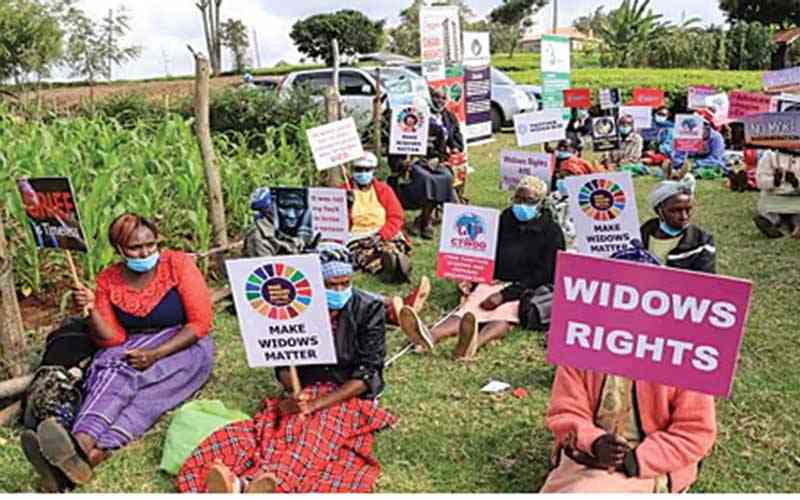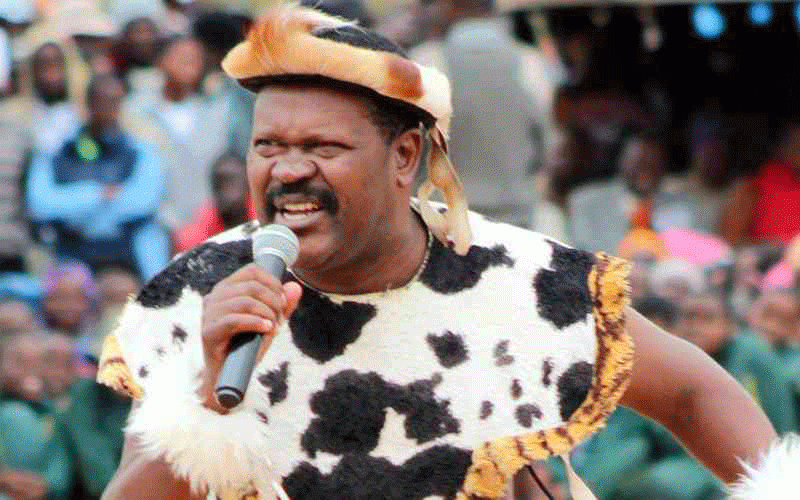
WHILE many still consider climate change a myth like the biblical stories of reincarnation, evidence of the effects of this malaise are rudely awakening us from the deep slumber of denial, born out of the recognition that Climate change is happening now.
The effects of climate change are being felt today in the form of but not limited to cyclones, heat waves and droughts. The worldwide research acclaim is that climate change does not directly cause disasters, but sadly it amplifies or rather exacerbates their impacts.
Research reveals that disasters reinforce, perpetuate and increase existing gender inequalities, making catastrophic situations worse for women than men.
Practical experiences elicit a nod from those who eat from the plate of opinion that the climate change phenomenon carries a female face because during turmoil women and girls face increased exposure to gender specific risks.
The current manifesting weather vagaries are a direct result of climate change which can be defined as “…a long-term change in the average weather patterns that can harm human health, livelihoods, or natural resources.”
A disaster is any event that causes serious disruption of the functioning of a community or society, causing major human, material or environmental losses which exceed the ability of the affected society to cope using only its own resources.
Disasters are a result of human interaction with nature, technology and other living entities. The same applies for Anthropogenic (human induced) climate change that causes weather patterns to be less predictable. Disasters vary in how they occur, what causes them and exactly how they manifest but what is testament is that they are undeniably taking place.
Zimbabwe is particularly vulnerable to climate induced hazards such as drought, dry spells, floods and cyclones that can trigger food insecurity. Since there is an appreciation and the acknowledgement by experts in the field that climate change intensifies extreme weather events, it is the writer’s view to refer to these as "climate disasters."
- COP26 a washout? Don’t lose hope – here’s why
- Out & about: Bright sheds light on Vic Falls Carnival
- COP26 a washout? Don’t lose hope – here’s why
- Out & about: Bright sheds light on Vic Falls Carnival
Keep Reading
Inequality between males and females increases as females assume many of the new burdens associated with climate change.
Climate change disasters affect women, men, boys and girls in different ways. Socio-economic conditions, traditional practices, and cultural beliefs often mean that women and their children are disproportionately affected.
The exposure to pandemics is compounded by endemic poverty that perpetuates vulnerability especially for rural women.
The current witnessed climate change impacts are a clear testimony that vulnerability is a function of poverty and that climate change carries a female face making it harder for women to fulfill their gender ascribed roles.
This gendered nexus elucidates the vicious marriage between gender and disasters. Women’s rights to participate in decision-making are often-times embedded within rights that are controlled by men or allocated by male-led and dominated institutions in most instances.
The worldwide research acclaim is that climate change does not directly cause disasters, but sadly it amplifies or rather exacerbates their impacts such as prolonging periods of water scarcity, deterioration in access to sexual and reproductive health, early and forced marriages, increased poverty.
These calamities result in a fatal seduction for women and places disproportionate gendered burdens on women and girls.
Climate change has induced increasingly erratic rainfall which, combined with limited adaptive capacities, has resulted in peaks in food insecurity. In many communities, women and girls are responsible for securing water and food for their households and communities.
Climate change disrupts water availability, access and quality, thereby impacting women’s daily lives through increasing their workload.
The climate change phenomenon carries a female face because during turmoil women and girls face increased exposure to gender specific risks such as gender based violence, including but not limited to sexual assault and exploitation.
The appreciation and acknowledgement by experts that climate change intensifies extreme weather events, one can be forgiven for referring to these climate-induced calamities as "climate disasters" that expose underlying fragilities that exacerbate existing inequalities.
Testament to this assertion is the disproportionate disenfranchisement that Cyclone Idai and Covid-19 caused for women and girls in Zimbabwe through disrupting livelihoods especially in the informal sector where more women earn their living.
Meanwhile, the potential contributions that women can offer to the disaster risk reduction imperative around the world are often overlooked and female leadership in building community resilience and inclusivity to disasters is frequently disregarded.
Gender dimensions of natural disasters have gained increasing recognition at the international level since the 1990s calling for “A gender perspective should be integrated into all disaster risk management policies, plans and decision-making processes, including those related to risk assessment, early warning, information management and education and training.”
However, not much progress has since been made to mainstream gender in disaster risk reduction (DRR) policies and programs in Zimbabwe in particular.
Gender is recognised as a cross-cutting principle of the Hyogo Framework for Action 2000-2015: on Building Resilience of Nations and Communities to Disaster. Section 8 of the Zimbabwe National Climate Policy of 2017 specifically calls for the promotion of gender responsive climate programming and implementation of climate change policies, strategies and actions through promoting gender responsive mechanisms but sadly that’s as far as it goes in terms of implementation.
Though the Zimbabwe’s Climate Change Response Strategy is born out of the recognition that Climate change is happening now and that its impacts are being felt today.
Although the government has admitted that the Civil Protection Act (Chapter 10:06) is now archaic through drafting the Disaster Risk Management Bill, worrisome is the snail’s pace and the attended lack of political will towards finalization of the Bill been.
The DRM Bill has been stuck in the legislative enactment process for more than a decade.
Such continued delay put pay to the allegations that suggest the government does not appreciate the impact of the weaknesses of the current CPA on the causes of the invisibility of women in the current disaster risk reduction framework in Zimbabwe.
Recent disasters such as Cyclone Idai, the Covid-19 pandemic and the currently experienced El-Nino drought stretched Zimbabwe’s DRM institutions beyond limit thereby exposing capacity and policy gaps in coordination of civil and social protection, humanitarian assistance and management.
To all intents and purposes, this opinion piece remains a noble objective to provide evidence to push the government to expedite the #ACTonDRMBill finalisation because what is predictable about climate change is its unpredictability.
*Alfred Towo is a development programming specialist in work spanning humanitarian emergencies, disaster and livelihoods management, digital advocacy, climate change adaptation and resilience building. He currently works in the capacity of agriculture field and livelihoods officer for the Verager — MASAP (Markets and Seeds Access Project) funded by The Swiss Agency for Development and Cooperation. The project is being implemented in Mudzi, Zimbabwe, Zambia and Malawi and it focuses on the development of the cowpea value chain through the niche vegan and vegetarian market.









